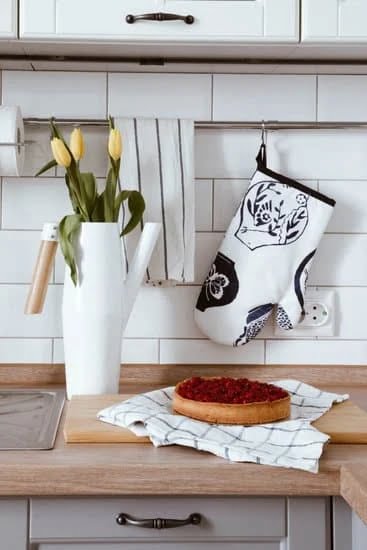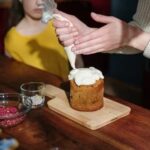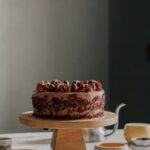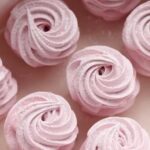Piping decorating cake is not just a culinary skill, it is an art form that has been perfected over centuries. From delicate lace patterns to intricate floral designs, the art of piping adds beauty and elegance to any cake. In this article, we will explore the world of piping decorating cake, discussing its popularity and significance in the baking world, as well as its historical origins.
Piping decorating cake has become an essential skill for any baker or pastry chef. It allows them to create stunning designs and personal touches on their cakes, taking them from ordinary to extraordinary. Whether it’s a simple birthday cake or a grand wedding masterpiece, piping can enhance the overall appearance and make a lasting impression.
The history of piping techniques can be traced back to ancient civilizations where intricate patterns were piped onto cakes as symbols of celebration and ritual. Over time, these techniques have evolved and developed into the vast array of decorative options we see today. From delicate scrollwork to vibrant flowers, the possibilities are endless when it comes to piping decorating cake.
In the next sections of this article, we will dive deeper into the essential tools needed for piping decorating cake, explore different types of icing commonly used for piping, learn various piping techniques from basic to advanced designs, troubleshoot common challenges faced during piping decoration, and discover additional attachments and accessories that can elevate cake decorations. So grab your piping bags and tips because we’re about to embark on a journey into the captivating world of piping decorating cake.
Essential Tools for Piping Decorating Cake
Piping Bags
One of the essential tools for piping decorating cake is the piping bag. Piping bags come in various materials such as plastic, disposable, and reusable cloth. Plastic bags are popular for their affordability and convenience, while reusable cloth bags are environmentally friendly.
It’s important to choose a piping bag that feels comfortable in your hand and allows you to have good control over the icing flow. Some bakers prefer using disposable plastic piping bags because they can easily switch between different colors and flavors of icing without having to worry about washing reusable bags.
Piping Tips
Piping tips are another crucial tool for achieving different designs and textures on your cakes. There is a wide array of piping tips available, each with its own unique shape and purpose.
Some common types include round tips for creating lines, dots, and writing; star tips for making rosettes and borders; petal tips for creating flower petals; and leaf tips for adding foliage details. Beginners may find it helpful to start with a basic set of tips and gradually expand their collection as they become more comfortable with piping techniques.
Couplers and Spatulas
Couplers are handy tools that allow you to easily switch between different piping tips without having to change the entire piping bag. They consist of two parts – a base that fits into the piping bag and a top ring that holds the desired tip securely in place. Couplers are especially useful when working with multiple colors or when experimenting with different designs on the same cake.
Spatulas play an important role in making sure your icing is properly mixed, smooth, and ready for piping. Offset spatulas are particularly helpful when it comes to spreading icing smoothly on the surface of the cake before starting the decorating process.
When selecting tools for piping decorating cake, it’s important to consider not only their quality but also their compatibility with your preferred icing types and techniques. By having the right tools at your disposal, you’ll be well-equipped to bring your cake designs to life with precision and creativity.
Types of Icing for Piping
When it comes to piping decorating cakes, choosing the right type of icing is essential. Different types of icing will yield different results in terms of flavor, texture, and ease of piping. In this section, we will explore the most common types of icing used for piping and provide tips on achieving the perfect consistency for each.
- Buttercream: Buttercream is perhaps the most popular and versatile icing for piping. It is made with butter or shortening, powdered sugar, and flavorings such as vanilla or chocolate. Buttercream has a soft and creamy texture, making it easy to pipe intricate designs. It can be tinted with food coloring to achieve vibrant shades and can also be flavored with extracts or fruit purees.
- Royal Icing: Royal icing is known for its smooth and hard finish, making it ideal for intricate designs that require stiffness and stability. It is made from egg whites or meringue powder, powdered sugar, and a small amount of lemon juice or cream of tartar. Royal icing dries quickly when exposed to air, which allows for more complex decorations such as flowers, scrolls, and lace patterns.
- Ganache: Ganache is a rich glaze made from chocolate and cream. Although not typically used solely for piping intricate designs due to its softer consistency, ganache can be used as a filling between cake layers or for creating decorative drips on the sides of cakes. When cooled and slightly thickened, ganache can be piped into simple shapes such as dots or lines.
Each type of icing has its own pros and cons when it comes to piping decorating cake. For example, buttercream provides great flavor and versatility but may not hold its shape well in hot weather conditions. On the other hand, royal icing offers durability but may not have as pleasant a taste as buttercream.
To achieve the right consistency for piping with any type of icing, it is crucial to pay attention to the ratio of liquid (such as milk or heavy cream) to powdered sugar. Adding additional liquid can make the icing more fluid and easier to pipe, while adding more powdered sugar will make it stiffer and more suitable for intricate designs. Practice is key in finding the perfect consistency for each piping project.
| Type of Icing | Pros | Cons |
|---|---|---|
| Buttercream | – Versatile and easy to work with
| – May not hold up in hot weather
|
| Royal Icing | – Hardens quickly for intricate designs
| – Not as tasty as buttercream
|
| Ganache | – Rich chocolate flavor
| – Softer consistency may limit detailed piping
|
Piping Techniques 101
Mastering the art of piping decorating cake requires an understanding of fundamental piping techniques. Whether you’re a beginner or looking to refine your skills, this section will guide you through the basics of piping. By learning these techniques, you’ll have the foundation to create beautiful and intricate designs on your cakes.
Firstly, it’s important to hold the piping bag correctly for better control. Hold the bag at a 45-degree angle with one hand placed near the top and the other hand at the base. This allows for even pressure and consistent flow of icing as you pipe. Practice gripping and squeezing the bag gently to get a feel for how much pressure is needed for different designs.
Now let’s explore some basic piping techniques that every cake decorator should know. Writing is a popular technique used for adding messages or names onto cakes. To achieve this, use a round tip and apply steady pressure while guiding the piping bag in a fluid motion to form letters or words. For dots, simply squeeze out small balls of icing by applying gentle and consistent pressure.
Lines are another versatile technique that can be used for borders or outlines on cakes. With a steady hand movement, pipe straight lines by applying even pressure while moving in one direction. Rosettes are another classic design created by starting with a small dollop of icing in the center and swirling around it in a circular motion until you reach your desired size.
By practicing these basic piping techniques, you will gain confidence in your abilities and be able to create various designs on cakes. Remember that consistency in your hand movements and control over the pressure applied is key to achieving smooth and flawless results. So grab those piping bags, experiment with different tips, and let your creativity flow.
Advanced Piping Designs and Techniques
Once you have mastered the basic piping techniques, it’s time to explore more advanced designs and techniques to really elevate your cake decorations. Advanced piping designs can take your cake decorating skills to the next level, allowing you to create intricate and stunning creations.
One of the most popular advanced piping techniques is creating floral designs. From roses to daisies, mastering the art of piping flowers requires patience and practice. By using different piping tips and varying pressure, you can create realistic flower petals that will impress anyone who sees your cakes.
Ruffles are another beautiful technique that adds elegance to any cake design. Using a petal or leaf tip, you can create delicate ruffles that resemble fabric or waves. Practice different angles and positioning of the tip to achieve various ruffle effects.
For those looking for a more intricate design, lace piping is a wonderful choice. Lace designs add a touch of sophistication and femininity to cakes. You can use lace molds as guides or practice freehand lace piping for a more personalized touch.
Lastly, the basketweave technique creates the appearance of woven strips on the sides of a cake. This classic technique is perfect for creating textured backgrounds or adding depth to your cake designs.
To truly master these advanced piping designs and techniques, it’s important to practice regularly. Start with simpler versions of each design and gradually work towards more complex patterns. Experiment with different icing consistencies and colors to create unique variations of each design.
As you become more comfortable with these techniques, don’t be afraid to experiment and combine them to create your own signature style. The possibilities are endless when it comes to advanced piping designs, so let your imagination run wild.
| Piping Tool | Description |
|---|---|
| Petal Tip | Narrow and curved tip for creating realistic flower petals |
| Leaf Tip | Triangular-shaped tip for creating leaves, branches, and ruffles |
| Lace Mold | Plastic or silicone mold with intricate lace designs for guiding lace piping |
| Basketweave Tip | Flat, rectangular tip with serrated edges for creating woven basket patterns |
As you embark on your journey into advanced piping designs and techniques, remember to be patient with yourself. It takes time and practice to develop the skills necessary to create stunning cake decorations. Enjoy the process of learning and experimenting, and soon enough you’ll be able to create breathtaking cakes that amaze everyone around you.
Troubleshooting Common Piping Challenges
When it comes to piping decorating cake, there are often some common challenges that you may encounter along the way. However, with a little bit of knowledge and practice, you can overcome these obstacles and create beautiful cake decorations. In this section, we will identify some of the most common piping challenges and provide solutions for each one.
- Air Bubbles: One of the most frustrating issues in piping decorating cake is the presence of air bubbles in your icing. These air bubbles can cause unwanted gaps or inconsistencies in your design. To prevent air bubbles, make sure to properly fill your piping bag without trapping any air inside.
You can do this by gently squeezing out any excess air before starting to pipe. If you are still experiencing air bubbles, try tapping your filled piping bag on a flat surface to release any trapped air. - Inconsistent Pressure: Maintaining consistent pressure while piping is crucial for creating smooth and even designs. If you find that your lines or shapes are uneven, it may be due to inconsistent pressure on the piping bag. Practice applying steady pressure as you pipe and try adjusting your grip on the bag for better control. Additionally, make sure that the icing consistency is appropriate for the specific technique you are attempting.
- Achieving Straight Lines: Creating straight lines with a piping bag can be challenging, especially if you don’t have much experience. To achieve straight lines, hold your piping bag at a 90-degree angle to the surface of the cake while applying steady pressure. You can also use guides or rulers placed against sides of the cake as reference points to ensure straight lines.
- Smoothing Out Imperfections: Sometimes, despite our best efforts, a piped decoration may not turn out as planned. If you notice any imperfections or unevenness in your design, don’t panic.
There are techniques for smoothing out imperfections like using a small spatula or the back of a spoon to gently press down and smooth out any uneven areas. You can also use a toothpick or a clean paintbrush to carefully adjust details, such as edges or corners.
By addressing these common piping challenges, you’ll be well on your way to becoming a confident cake decorator. Remember, practice makes perfect, so don’t be discouraged if it takes some time to master these troubleshooting techniques. With patience and persistence, you’ll soon be creating stunning and professional-looking cake decorations.
Decorative Piping Attachments and Accessories
When it comes to piping decorating cake, there are a variety of decorative attachments and accessories that can take your cake designs to the next level. These accessories not only add intricate details and textures to your creations, but they also provide an opportunity for unique customization. Here are some common decorative piping attachments and accessories that you can incorporate into your cake decorations:
- Impression Mats: Impression mats are great tools for adding texture and patterns to your cake designs. These mats, which are usually made of silicone or plastic, come in a variety of designs such as lace, floral patterns, or geometric shapes. Simply press the mat onto rolled fondant or buttercream icing to create stunning embossed patterns.
- Stencils: Stencils offer a quick and easy way to add beautiful designs onto your cakes. They come in various shapes and patterns, including flowers, damask prints, or even personalized messages. To use a stencil, place it on the cake surface and secure it with some edible adhesive spray or royal icing. Then gently spread icing over the stencil using a spatula or scraper to transfer the design onto the cake.
- Edible Pearls: Edible pearls are small shimmering balls that can add elegance and sophistication to your cake decorations. They come in various sizes and colors, allowing you to choose the perfect pearls for your design. Simply apply a small amount of piping gel or royal icing on the desired area of your cake and carefully place the pearls using tweezers or a specialized tool.
- Piping Nozzles with Different Tips: Piping nozzles with different tips give you endless possibilities for creating unique textures and shapes on your cakes. For example, you can use a writing tip for fine lines or lettering, a petal tip for flower petals, or a star tip for rosettes or borders. Experimenting with different nozzle tips can help you achieve different effects and enhance the overall look of your cake.
By incorporating these decorative piping attachments and accessories into your cake designs, you can elevate the creativity and visual appeal of your creations. The key is to experiment and have fun with these tools, allowing your imagination to run wild. Remember, each cake is a canvas for your artistry, and these accessories are here to help you bring your vision to life.
Practical Tips for Piping Decorations
Time-saving techniques for piping multiple cakes efficiently
When it comes to decorating multiple cakes, efficiency is key. Here are some practical tips to help you save time and streamline your piping decorations process:
- Plan Ahead: Before starting your piping decorations, create a schedule and timeline for each cake. This will help you prioritize tasks and allocate the right amount of time for each cake.
- Batch Work: Instead of completing one cake from start to finish before moving onto the next, consider batching certain steps such as preparing icing or filling piping bags. This allows you to work more efficiently without constantly stopping and starting.
- Use Templates: Create reusable templates or stencils for commonly used designs, such as letters or shapes. These templates can be made from parchment paper or thin plastic sheets, making it easier and quicker to trace the design onto the cake surface.
- Pre-fill Piping Bags: Whenever possible, pre-fill your piping bags with different colors of icing before starting to decorate the cakes. This way, you won’t have to interrupt your flow to refill bags frequently.
- Practice Piping Designs on Paper First: If you’re trying out a new design or technique, practice it on parchment paper or wax paper before moving onto the cakes themselves. This will give you a chance to refine your skills and get comfortable with the design without wasting any icing.
Suggestions for practicing piping skills outside of cake decoration
To become a master at piping decorations, it’s important to practice regularly. Here are some suggestions for practicing your piping skills away from actual cake decoration:
1.Parchment Paper Practice: Lay out sheets of parchment paper and use them as a practice surface for honing your skills. You can try different techniques such as writing messages, creating rosettes, or pipe straight lines.
2.Wax Paper Practice: Similar to parchment paper, wax paper can be used to practice piping skills. It has a smooth surface that allows the icing to flow easily, making it perfect for practicing intricate designs.
3.Piping Practice Boards: Invest in or create your own piping practice boards. These boards are designed with various patterns, shapes, and sizes that allow you to practice different techniques and designs repeatedly.
4.Cookies or Cupcakes: Use cookies or cupcakes as a canvas for practicing piping skills. You can ice them with a base color and then experiment with different designs and techniques on the smaller surface area.
Remember, the more you practice, the better you’ll become at piping decorations. So don’t limit yourself to just cake decoration – take every opportunity to improve your skills by practicing on alternative surfaces and objects.
Conclusion
In conclusion, piping decorating cake is not only a popular and essential skill in the baking world, but it also brings joy and creativity to the art of cake decoration. Through this article, we have explored the tools, icing types, techniques, troubleshooting strategies, decorative attachments, and practical tips that come together to form the intricate designs we see on beautifully decorated cakes.
Piping decorating cake has a rich history and origins that date back centuries. From humble beginnings to becoming an indispensable skill in today’s baking industry, piping techniques have evolved and continue to captivate bakers and cake enthusiasts alike. Whether it’s writing a heartfelt message on a birthday cake or crafting delicate flowers for a wedding masterpiece, piping allows us to express our artistic flair through delicious creations.
While mastering piping can take time and patience, the journey is filled with endless possibilities for creativity. The more we practice the different techniques and experiment with various designs, the better we become at achieving our desired results. So, I encourage all aspiring bakers and decorators to embrace the joy of piping decorating cake. Don’t be afraid to make mistakes or try new things – after all, it is through exploration and practice that true mastery is achieved.
Lastly, remember that piping decorating cake is not just about creating visually stunning treats; it is about the joy that comes from bringing happiness to others through our creations. Whether you are baking for family gatherings or selling your cakes in a bakery shop, your beautifully piped decorations will undoubtedly leave a lasting impression on those who indulge in your creations.
So let your imagination soar, continue honing your skills, and never forget that at its core, piping decorating cake is an art form meant to bring joy into people’s lives.
Frequently Asked Questions
How do you decorate a cake with piping?
Decorating a cake with piping involves using a piping bag filled with frosting or icing to create various designs and patterns on the cake’s surface. To begin, you would want to attach a piping tip of your choice to the end of the bag – different tips produce different shapes and textures. To pipe, hold the bag firmly in your dominant hand with a steady grip, while using your other hand to guide and support it.
Apply gentle pressure on the bag to release the frosting as you move it along the surface of the cake. For smooth lines and even coverage, it’s important to maintain a consistent pressure while piping. You can practice on parchment paper or a separate surface before actually applying it onto the cake.
What are the best piping tips for beginners?
For beginners in cake decorating, there are a few piping tips that are particularly user-friendly and versatile. The round tip (such as a size 2 or 3) is great for creating basic outlines, writing, or adding small details like dots or beads. The star tip (like a size 18 or 21) works well for creating rosettes, shells, or rosette borders with its textured appearance.
A petal tip (around size 104) allows you to make beautiful petals or ruffles when piped in a circular motion. Lastly, an open-star tip (e.g., size 16) helps create decorative stars, zigzags, or fluted edges with its unique shape.
How do you pipe a cake easily?
Piping a cake becomes much easier if you follow several key steps to ensure success and minimize mistakes. Firstly, make sure your frosting consistency is suitable for piping – it should be thick enough to hold its shape but still soft enough to be squeezed through the piping bag without straining too much. Before filling the bag with frosting, twist and secure any excess bag material at the top so that it stays closed during use. Hold the bag firmly but not too tightly so that you have control over the frosting flow.
To pipe smoothly, try to maintain a consistent pressure and steady hand movement, applying gentle force to release the frosting evenly. If you’re attempting intricate designs, practicing on a separate surface can help you gain confidence and precision before piping directly onto the cake. Remember to always clean your piping tips thoroughly after use for optimal performance and longevity.

Welcome to our cake decorating blog! My name is Destiny Flores, and I am the proud owner of a cake decorating business named Cake Karma. Our mission is to provide delicious, beautiful cakes for all occasions. We specialize in creating custom cakes that are tailored specifically to each customer’s individual needs and tastes.





